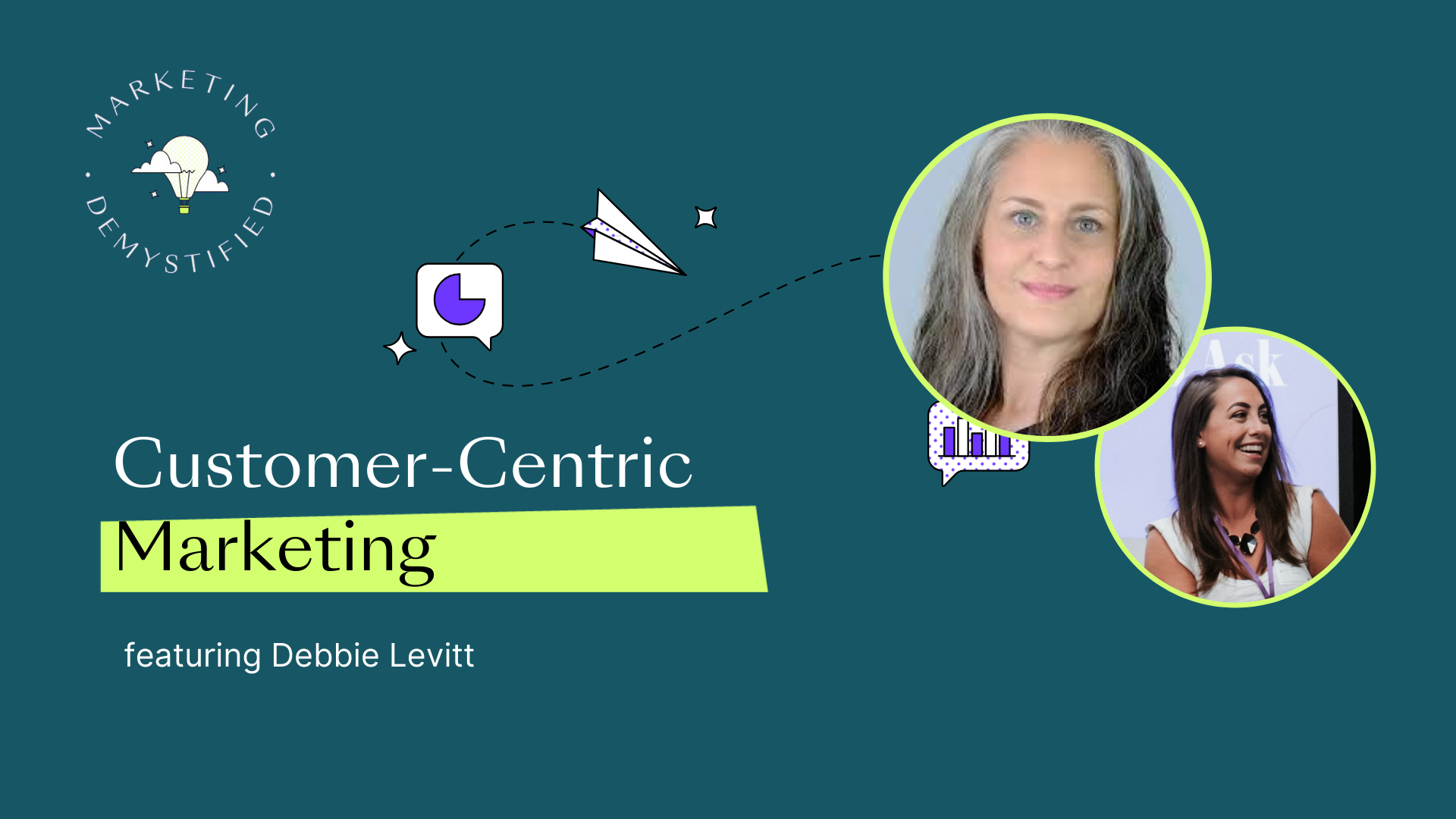Being customer-centric and creating the best marketing or user experience in general with the customer top of mind can be easier said than done.
Just take the example of copy. Strategists determine the direction, writers craft it and then some manager approves it. Everyone brings their perspectives by default – so how do we always shift those perspectives to be from the customer, the person who should find value in the content and experience.
To discuss that topic, Jenn Mancusi is joined by Debbie Levitt, author of “Customers know you suck.” Let’s demystify marketing together on this episode of “Marketing, Demystified.”
Customer-centric marketing: Putting your audience first
Picture yourself struggling with a new software tool that promised to streamline your work but instead leaves you frustrated and unproductive. These scenarios highlight a common problem in marketing: a disconnect between what companies think customers want and what customers actually need.
“We are a customer of so many companies or potential customer, and we know how bad it is,” Debbie said. “And yet we go into jobs and we cut corners, we are deadline focused, we’re not customer focused. And we produce the same outputs and outcomes that on the other side make us pretty mad.”
This disconnect is why customer-centric marketing is crucial. It’s about truly understanding and addressing customer needs. But how can businesses bridge this gap and create marketing that resonates with their audience?
Read next: The Power of Strategic Storytelling: Transforming Your Brand and Driving Growth
Understanding customer-centricity
It’s about understanding your audience’s needs, preferences, and behaviors. Companies then tailor their approach to meet customers where they are.
“Being more customer centric is not about patting ourselves on the back and saying we really care about customers, we have empathy,” said Debbie. “But really having to ask ourselves some of the tough questions about what do we know about our customers? We think we know this. But there exists a possibility that this information is incorrect, or it’s outdated.”
This approach requires businesses to move beyond basic demographics. They need to explore the motivations and challenges of their target audience. It’s not enough to claim empathy or care for customers. Companies must show it through their actions and offerings.
The pitfalls of assumed knowledge
A major obstacle to true customer-centricity is thinking we already know what our customers want. Many businesses rely on outdated information or stereotypes about their audience. This overconfidence can lead to misaligned marketing efforts and products that don’t resonate with the intended audience.
To avoid this, companies must challenge their assumptions and seek updated, accurate information about their customers regularly.
The power of qualitative research
While numbers are important, qualitative research is crucial for understanding customers on a deeper level. Observational research, customer interviews, and analysis of customer feedback provide valuable insights that data alone can’t reveal.
“I’m all about the qualitative research, and I’m all about the observational research,” said Debbie. “I want to watch how people are doing this now. I want to enter into their world.”
This type of research helps businesses uncover the “why” behind customer behaviors and preferences, leading to more effective marketing strategies.
Rethinking customer journeys
Traditional customer journey mapping often follows a straight path that may not reflect reality. Instead of assuming all customers follow the same journey, businesses should focus on finding and fixing problem areas.
“Map the journey to the problem,” said Jenn. “You’ve got a problem. You’ve got a bunch of people falling out of your product at this point or a bunch of people leaving your website—map the journey to that.”
This approach helps companies pinpoint where they’re losing customers and make specific improvements to enhance the overall experience.
Aligning marketing with customer goals
Customer-centric marketing goes beyond promoting products or services. It’s about understanding and aligning with the customer’s ultimate goals. Companies should focus on the end result that customers are seeking, rather than features. This creates more compelling marketing messages.
True customer-centricity requires alignment across all departments within an organization. This ensures that the promises made in marketing materials are fulfilled throughout the customer’s journey with the company.
When evaluating marketing efforts, it’s crucial to consider metrics that reflect customer success. These metrics often differ from internal business goals. While conversions and sales matter, they don’t tell the whole story of customer satisfaction and long-term loyalty.
Businesses should focus on metrics that matter to customers, such as problem resolution rates, time savings, or achievement of personal goals. This approach gives businesses a more accurate picture of their marketing effectiveness.
Continuous improvement and adaptation
Customer-centric marketing is an ongoing process of learning and adaptation. As customer needs and market conditions change, marketing strategies must evolve, too. This requires a commitment to continuous research, testing, and refinement of approaches.
“We’ve got to be able to use critical thinking and question ourselves,” said Debbie.
Companies need to adapt based on new insights to stay relevant.


